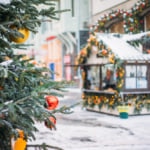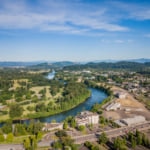Name: Ohara Residence
Address: 207 Kitsuki, Kitsuki City, Oita Prefecture
Official Website: http://www.city.kitsuki.lg.jp/soshiki/24/ooharatei.html

10 recommended tourist spots in Kitsuki City, Oita Prefecture!
Kitsuki City (Kitsuki-shi) is located on the northern coast of Beppu Bay, at the southern edge of the Kunisaki Peninsula in Oita Prefecture. It was once written as "木付" (Kitsuki), but due to a clerical error by the shogunate during the Edo period, it came to be written as "杵築" (Kitsuki).
Kitsuki is a convenient stop for tourism, as it lies on the route from Oita Airport to Beppu Onsen and Oita City! It also offers excellent access to Usa Jingu and Bungotakada via the Nippo Main Line.
Kitsuki is known as a "Little Kyoto," preserving the atmosphere of the feudal era castle town! It’s the kind of place that makes you want to rent a kimono and explore. Here are some recommended tourist spots in Kitsuki City.
table of contents
[x] close
10 recommended tourist spots in Kitsuki City, Oita Prefecture!
1. Kitsuki Castle Town
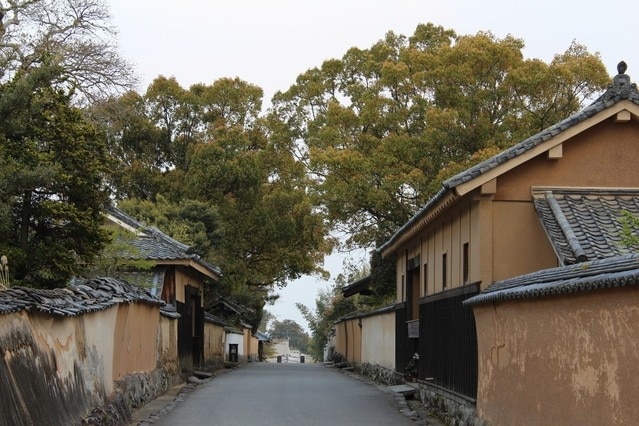
During the Edo period, Kitsuki was home to the Kitsuki Domain, which was ruled by the Nomi-Matsudaira family and had a revenue of 32,000 koku. The castle town not only retains a strong atmosphere of its feudal past but is also known as Japan’s only "sandwich-style" townscape.
What makes it "sandwich-style"? Samurai residences are lined up on two elevated areas, "Kitadai" (North Plateau) and "Minamidai" (South Plateau), with a merchant town stretching in the valley between them. When looking from one samurai district to the other, the white-walled merchant houses come into view below. Unlike the grid-like structure of "Little Kyoto" towns, Kitsuki’s unique layout has been attracting attention from tourists in recent years.
Here are some must-visit spots in Kitsuki Castle Town.
◆ Ohara Residence
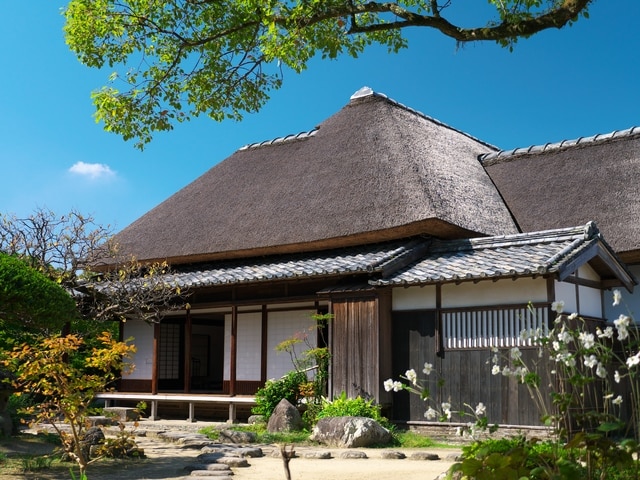
On Kitadai, one of the two elevated samurai districts, you will find the residences of high-ranking samurai of the Kitsuki Domain. Among them, the Ohara Residence stands out as the most grand and stately. This is no surprise, as the Ohara family served as the chief retainers (karō) of the domain.
Passing through the nagaya-mon gate, you are greeted by a grand entrance with an impressive gabled roof. As you walk around to the veranda, a tranquil yet dignified strolling garden welcomes visitors. While it lacks excessive decoration, the austere elegance reflects the authority of the chief retainers who governed the domain.
◆ Hitotsumatsu Residence
On the South Plateau, the must-visit spot is the Hitotsumatsu Residence, which offers a panoramic view of Morie Bay. This was the home of Sadakichi Hitotsumatsu, who served as a cabinet minister in the post-war First Yoshida Cabinet. He remains highly regarded as the first honorary citizen of Kitsuki City.
Although it is not an Edo-period samurai residence, the Hitotsumatsu family originally served as swordsmanship instructors for the Kitsuki Domain. Their practical and disciplined mindset is evident in the functional and thoughtful design of the house.
Name: Hitotsumatsu Residence
Address: 193-1 Minami-Kitsuki, Kitsuki City, Oita Prefecture
Official Website: https://goo.gl/t37NfG
◆ Nomi Residence
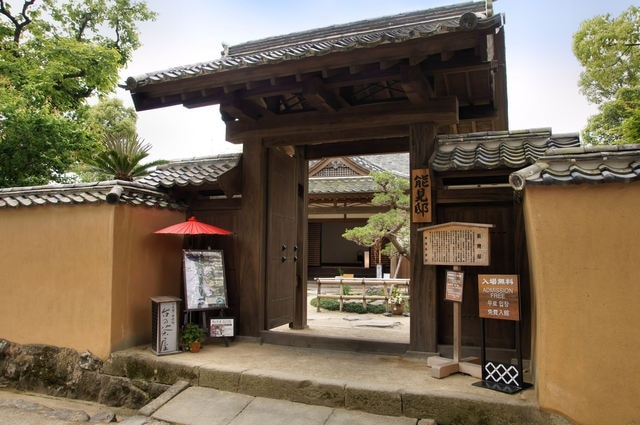
Located in Kitadai, the Nomi Residence underwent extensive renovations over two years, starting in 2008, making it one of the newest and most exciting attractions in Kitsuki.
The Nomi family was a branch of the Matsudaira clan, the lords of Kitsuki, giving their residence the highest prestige among Kitsuki’s samurai houses. The mansion spans 250 square meters of floor space and sits on a vast 1,440 square meter property with 12 rooms. A highlight of the residence is the traditional Japanese-style tea house, "Dai no Chaya," which is a great spot to take a break while exploring the town.
Unlike most other samurai residences in Kitsuki, which require an admission fee (a shared pass is available), the Nomi Residence offers free entry, making it a great option for visitors.
Name: Nomi Residence
Address: 208-1 Kitadai, Kitsuki City, Oita Prefecture
Official Website: http://dainochaya.com/
◆ Suya no Saka & Shioya no Saka Slopes
As Kitsuki Castle Town is sandwiched between two plateaus, it features many scenic slopes, some of which have become famous attractions due to their beautiful stone pavement and earthen walls.
The most iconic are "Suya no Saka" on the North Plateau and "Shioya no Saka" on the South Plateau, which face each other across the valley. Their names come from the vinegar shop (suya) and salt shop (shioya) that once stood at the bottom of each slope. From the earthen walls of the samurai residences, visitors can admire a view of the merchant town below, with its rows of white plaster storehouses and another samurai district rising beyond.
This is the best spot to appreciate Kitsuki’s unique "sandwich-style" castle town layout.
Name: Suya no Saka & Shioya no Saka Slopes
Address: 207 Kitsuki, Kitsuki City, Oita Prefecture
Official Website: http://www.visit-oita.jp/spots/detail/4412
◆ Kitsuki Shurakukan Theater
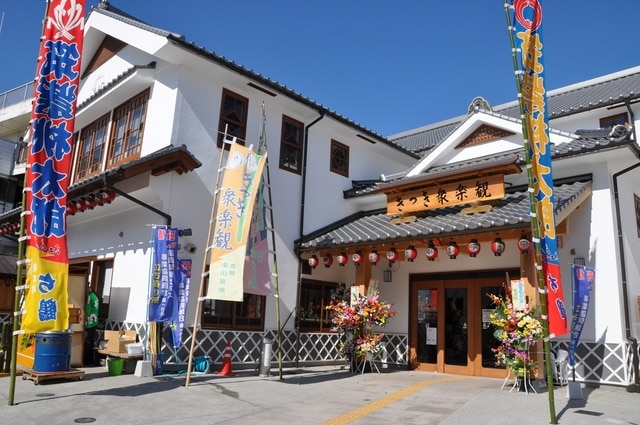
Kitsuki was not only a castle town but also a thriving port city, attracting many people and goods. Naturally, entertainment flourished here as well! The "Kitsuki Shurakukan" revives the tradition of kabuki-style theaters that were popular from the Meiji to early Showa eras.
While it incorporates pillars and beams from the original "Shurakukan" theater, the building itself repurposes a Taisho-era sake brewery, blending historical charm with modern entertainment. In recent years, young actors in popular theater performances have attracted a growing number of female fans, making it an increasingly popular venue. Even a quick visit while sightseeing in Kitsuki is sure to be enjoyable.
Name: Kitsuki Shurakukan Theater
Address: 398-1 Kitsuki, Kitsuki City, Oita Prefecture
Official Website: http://shuurakukan.com/
◆ Kitsuki Castle Town Museum
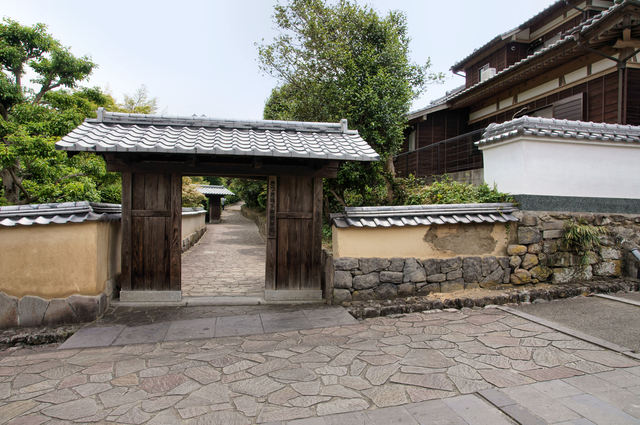
To deepen your understanding of Kitsuki’s history, start with a visit to the Kitsuki Castle Town Museum in Minamidai. The highlight is an incredibly detailed diorama that meticulously recreates Kitsuki as it appeared in the Edo period. Seeing the entire "sandwich-style" layout in miniature form makes it much easier to appreciate while walking around the town.
The museum also features realistic exhibits on the daily lives of Kitsuki samurai and displays artifacts from merchant families. Having some background knowledge in advance will surely make your visit to Kitsuki even more enjoyable.
Name: Kitsuki Castle Town Museum
Address: 193-1 Minami-Kitsuki, Kitsuki City, Oita Prefecture
Official Website: http://www.city.kitsuki.lg.jp/soshiki/24/kitukijyoukamatisiryoukan.html
2. Kitsuki Castle
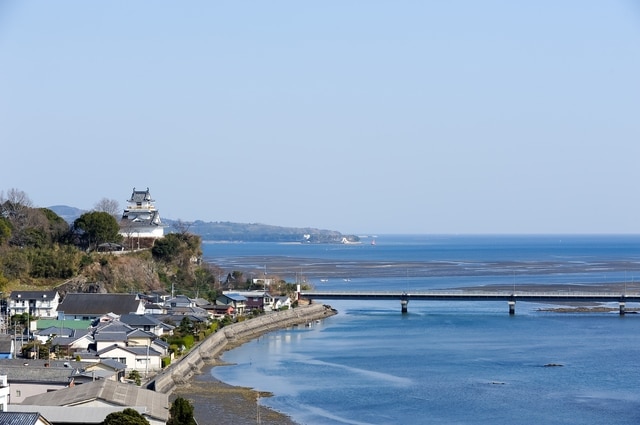
If you're visiting Kitsuki Castle Town, you should definitely stop by its centerpiece, Kitsuki Castle. Built in 1394, Kitsuki Castle withstood two major battles during the Sengoku period, proving its strength as a formidable fortress.
The castle is located at the tip of a cape at the mouth of the Yasaka River and served as the residence of the Matsudaira clan, the lords of Kitsuki Domain, during the Edo period. While only a portion of the original moats and stone walls remain, the reconstructed three-story castle tower at the main keep offers a spectacular view. On clear days, you can see across Beppu Bay to the Tsurusaki Coastal Industrial Zone.
Name: Kitsuki Castle
Address: 16-1 Kitsuki, Kitsuki City, Oita Prefecture
Official Website: https://goo.gl/P7p4gv
3. Hina Meguri Festival
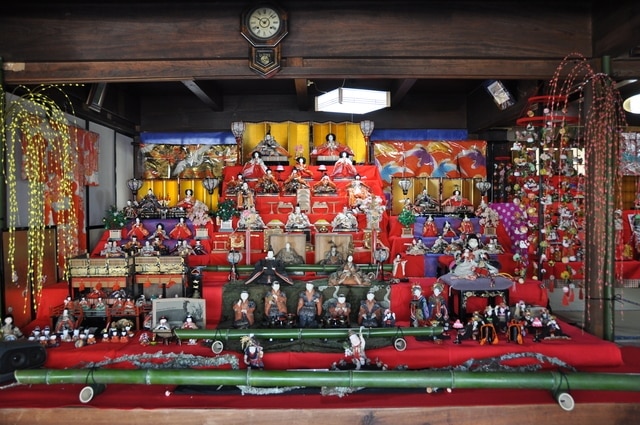
In the Kitsuki region, Hina dolls are called "Hiina." The Hiina Meguri is an event where samurai residences and merchant houses throughout Kitsuki Castle Town display their prized hina dolls to welcome visitors.
Some of these dolls have been passed down for centuries since the Edo period, while others once belonged to the Kitsuki domain lords. Each household showcases its own unique arrangement, making a stroll through Kitsuki’s castle town even more colorful and enjoyable. Kimono rentals and dressing services are also available, so you can fully immerse yourself in this traditional Japanese festival while wearing elegant attire.
Normally, Hina dolls are put away quickly after the Hina Matsuri (Doll Festival), but Kitsuki’s Hiina Meguri lasts for about a month, from early February to early March. The extended duration allows visitors to plan their trip without rushing.
Name: Hiina Meguri
Address: Kitsuki City, Oita Prefecture
Official Website: https://goo.gl/l1kMV4
4. Kitsuki Retro Museum
At the foot of Kitsuki Castle ruins, a nostalgic-looking building stands out. The Kitsuki Retro Museum houses over 2,000 items from the Showa era, including toys and household goods. Amazingly, all of these were collected by the museum’s owner.
For those who remember the Showa period, this place is sure to bring back fond memories. Younger visitors, on the other hand, might find the items refreshingly unique and fascinating.
From the Edo-period castle town to the Meiji-era Shurakukan Theater, and finally to the Showa-themed Kitsuki Retro Museum, exploring Kitsuki feels like stepping through a time capsule.
Name: Kitsuki Retro Museum
Address: 6-2 Tamon, Kitsuki, Oita Prefecture
Official Website: http://cycling-oita.jp/spots/detail/5645
5. Sumiyoshihama Resort Park
On the eastern side of Kitsuki, Sumiyoshi-hama is a long, narrow peninsula extending into Morie Bay, entirely dedicated to a massive resort area! Visitors can enjoy swimming at Sumiyoshi-hama Beach, as well as engaging in thrilling marine sports like jet skiing and wakeboarding, which have been gaining popularity in recent years.
The marine hotel offers ocean-view rooms and even has an onsen (hot spring), making it a perfect place for an extended stay.
While many people associate marine resorts with summer, Sumiyoshi-hama Resort Park is also a fantastic winter destination. It features one of Oita Prefecture’s largest oyster huts, where you can enjoy freshly grilled oysters while taking in the scenic views of Kitsuki during the colder months.
Name: Sumiyoshi-hama Resort Park
Address: 1165-2 Morie, Kitsuki City, Oita Prefecture
Official Website: http://www.sumiyoshihama.com/
6. Shigemitsu Family Residence
On September 2, 1945, Japan officially signed its surrender documents aboard the USS Missouri, marking the end of the Pacific War. The man who signed on Japan’s behalf was Mamoru Shigemitsu, the then-Foreign Minister. His childhood home, known as the Shigemitsu Residence, is now one of Kitsuki’s most notable historical sites.
Shigemitsu named the house Musekian (無迹庵), meaning "a place without footprints," signifying humility and a lack of self-importance. The residence features displays of personal belongings, photographs, and documents related to his life. More than just a historical landmark, the Shigemitsu Residence serves as a tribute to a man who, despite achieving great things, remained humble throughout his life.
Name: Shigemitsu Family Residence
Address: 893-1 Honjo, Kitsuki City, Oita Prefecture
Official Website: https://goo.gl/iEQrbM
7. Nata & Kariyado Beach
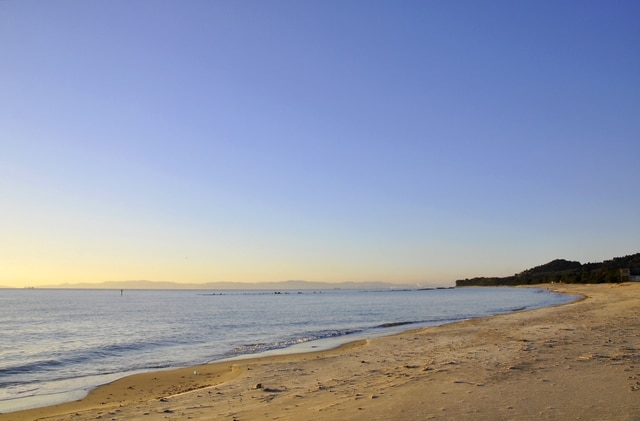
Stretching between Oita Airport and Sumiyoshi-hama, Nata Beach and Karishuku Beach are neighboring coastal areas known for their stunning white sand. Together, they form one of East Kyushu’s most beautiful beaches. The lush black pine groves lining the shores are equally remarkable, earning them a spot on the list of Japan’s Top 100 White Sand and Green Pine Beaches.
Near Nata Beach stands Nata Hachimangu Shrine (Nata-gu Shrine), a historically significant site unique to Kitsuki. Said to have been founded in 729, it serves as a branch shrine of Usa Jingu. Just offshore, Ichikishima Island, the original sacred site of Nata Shrine, is visible with a small red torii gate standing on the rocky outcrop.
Name: Nata & Karishuku Beach
Address: Nata, Kitsuki City, Oita Prefecture
Official Website: https://goo.gl/S3cVBT
8. Udo Waterfall
Located in the former Yamaga Town of Kitsuki City, Udo Waterfall cascades down a height of about 12 meters. While not particularly tall, the waterfall is surrounded by steep cliffs and a deep plunge pool, inspiring a legend that a white dragon resides within its depths.
Beyond the scenic beauty and refreshing negative ions of the waterfall, another attraction nearby is the Matsuo River Pool! This riverside pool, complete with two natural water slides, is perfect for small children to enjoy. Admission is free, but it is only open during the summer vacation period, so be sure to check before visiting.
Name: Udo Waterfall
Address: Hirose, Yamaga Town, Kitsuki City, Oita Prefecture
Official Website: https://goo.gl/SGaeNG
9. Doburoku Festival at Shirahige Tahara Shrine
Shirahige Tawara Shrine, located in the northern part of Kitsuki City, is a tranquil shrine nestled on the slopes of Futago Mountain. However, it comes alive every year on October 17 and 18 during the Doburoku Festival, a lively event where locally brewed doburoku (unrefined sake) is served to visitors and worshippers.
The tradition of brewing doburoku at Shirahige Tawara Shrine dates back to 710, making it a ritual that has continued for over 1,300 years. This thick, milky white sake carries not only a rich taste and aroma but also a deep spiritual significance. Normally, brewing sake requires government approval, but due to its long-standing history, Shirahige Tawara Shrine is granted an exception.
For those planning to explore Kitsuki by car, don’t worry! In recent years, visitors have been allowed to take home bottles of the sacred sake, ensuring that everyone can enjoy this historic brew.
Name: Shirahige Tawara Shrine Doburoku Festival
Address: Ota-Kutsukake, Kitsuki City, Oita Prefecture
Official Website: http://www.kit-suki.com/enjoy/index.php?action=story&sub_cat_id=3
10. Todoroki Jizo
Upstream along the Takayama River, which flows through Kitsuki City, lies a scenic spot steeped in legend.
Once, the lord of Kitsuki (then known as Kizuki), Yorinao Kizuki, had a beloved daughter who was set to marry the son of a neighboring lord. However, just before the wedding, a scandalous rumor about the princess’s infidelity spread, leading to the engagement being called off. Heartbroken and desperate to clear her name, she threw herself into Todoroki Pool.
Overcome with grief, her father enshrined a Jizo statue in her memory. Over time, a local belief emerged that applying white powder to the Jizo’s face would grant beauty. To this day, the small Todoroki Jizo remains covered in a layer of white powder from visitors’ prayers.
Recently, the site has also become popular with tourists seeking blessings for good skin and romantic luck. If you’re visiting Kitsuki, why not take a short detour and offer a prayer to this legendary Jizo?
Name: Todoroki Jizo
Address: Mizoi, Kitsuki City, Oita Prefecture
Official Website: http://www.i-oita.net/spot/history_culture/kitsuki/10821.html
◎ Summary
Kitsuki City is often overlooked in Oita tourism, but as you can see, it offers plenty of unique attractions, from its sandwich-style castle town to historical and cultural sites in the old city center.
In addition, the area near Oita Airport boasts beautiful coastal destinations such as Nata Beach and Sumiyoshi-hama, known for marine activities. As a city rich in history, Kitsuki is also home to many fascinating legends and traditions, making it a diverse and rewarding travel destination. If you’re flying into Oita, be sure to include Kitsuki in your itinerary!
RELATED ARTICLES
REGIONS
CATEGORIES
FEATURED ON Japan
-
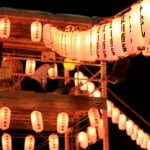
Not Just Fireworks! Introducing 3 Popular Festivals Around Kitasenju
-
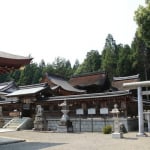
5 Must-See Tourist Spots in Ryūō Town – Deeply Historical Sites That Even History Buffs Will Love!
-
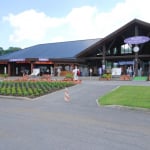
Full of Sweet and Delicious Local Specialties! 4 Popular Souvenirs You Can Buy in Numata City, Gunma Prefecture
-
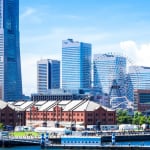
What is Yokohama Sea Bass?|Introducing Fares and Sightseeing Routes!
-
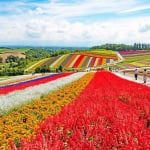
Where will you go for the summer vacation? Introducing recommended spots for domestic travel
MOST POPULAR ON Japan
-
 1
1Doha: Must-see Attractions in the Capital of Qatar
-
 2
2Toronto: 10 Things to do in this Picturesque Canadian City
-
 3
3Amarillo: A City Famous for It’s Amazing Canyons, Great History and Music
-
 4
4South Korea: Dazzling Scenery, Rich Culture and Fascinating History
-
 5
5Kuwait: A Country in Middle East Asia Famous for Hot Sand Dunes and Stunning Cityscape

